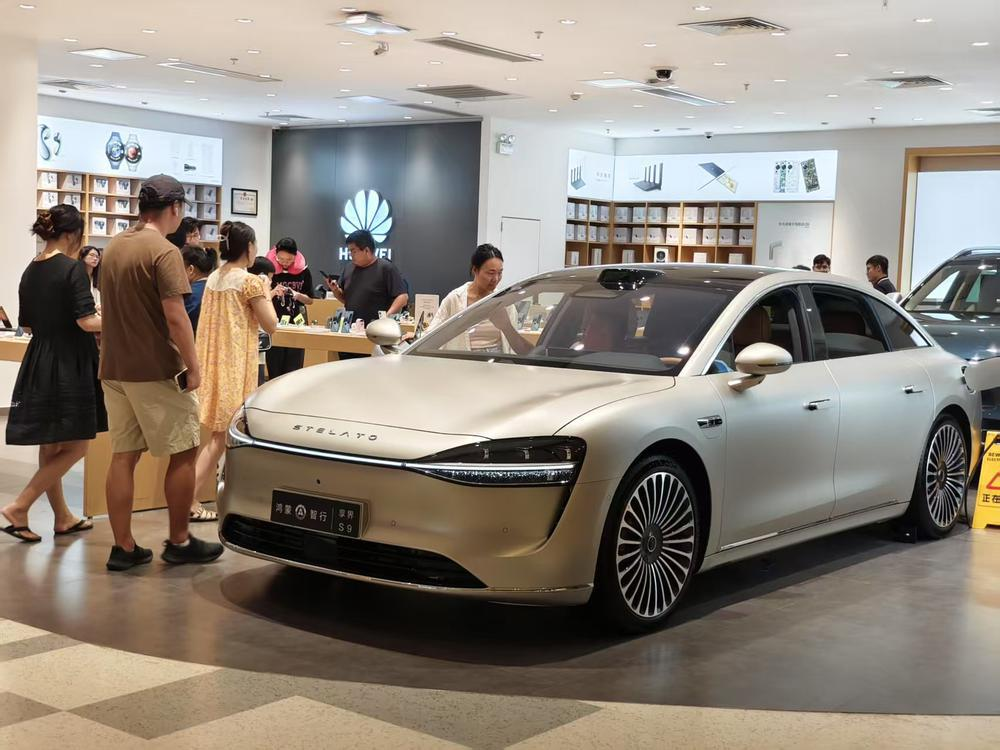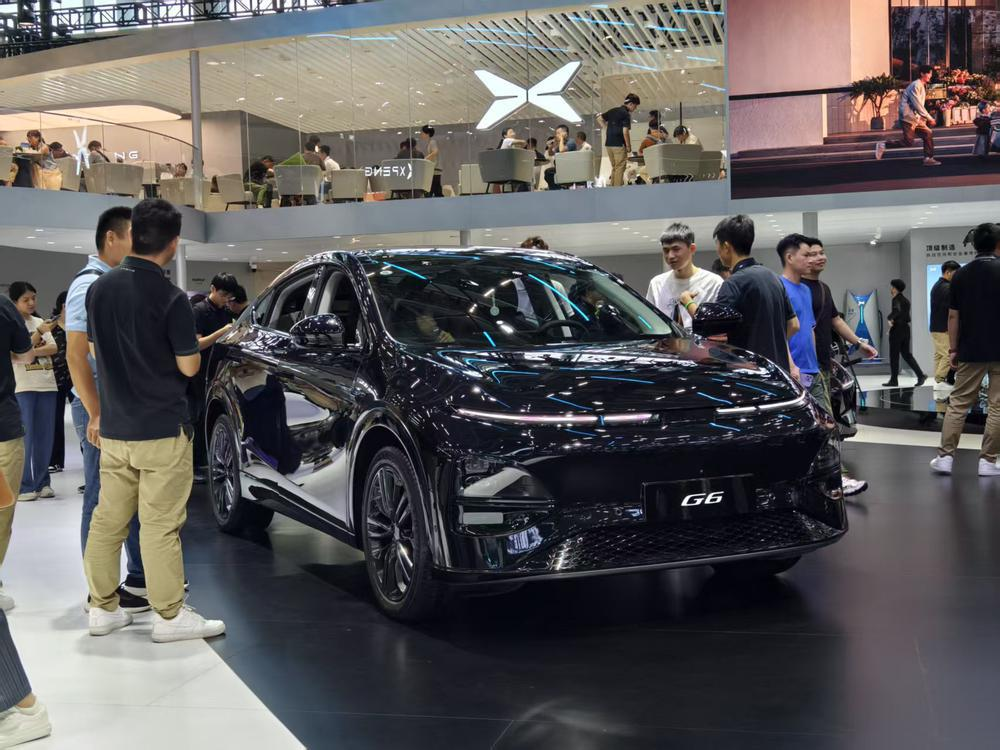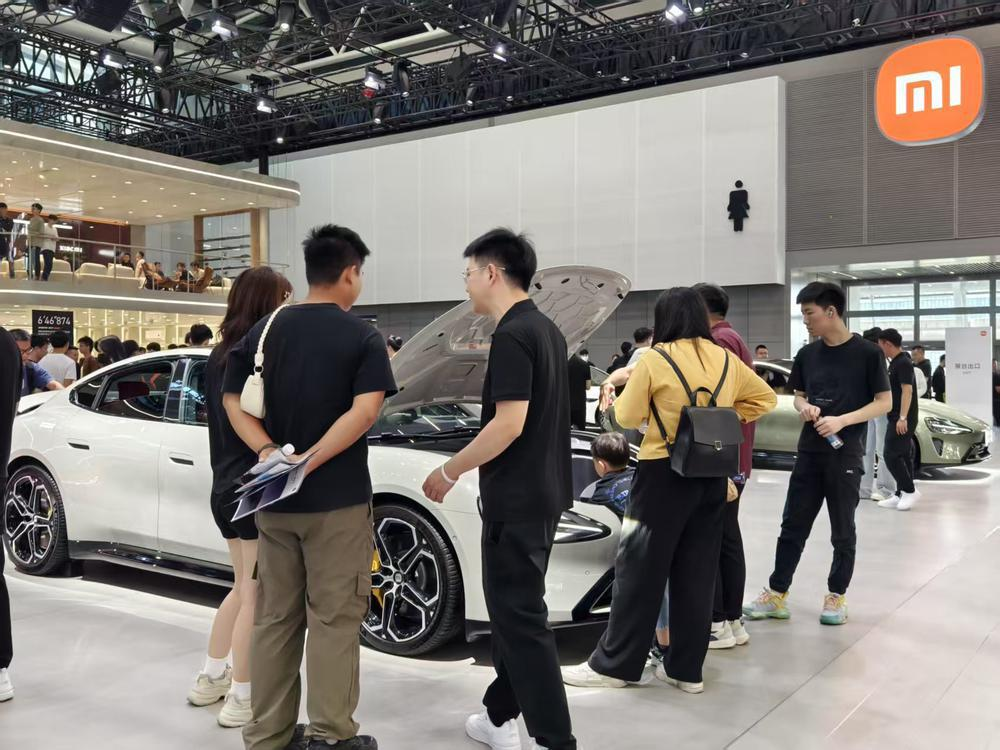
In 2024, China's total vehicle production and sales reached 31.282 million and 31.436 million units, up 3.7% and 4.5% year-on-year, respectively. This marked the 16th consecutive year China led the world in auto production and sales. In the first two months of 2025, the market continued its upward trajectory, with both production and sales growing by over 13% year-on-year, driven primarily by policy support.

Ahead of the May Day holiday, reporters visited several 4S dealerships in Guangzhou and Shenzhen and found that the trade-in initiative has significantly boosted consumer demand. Dealerships such as Guangwu Automobiles Trade Co., Ltd offered a combination of incentives, including subsidies for trade-ins and financial incentives. In Shenzhen alone, the policy helped drive the sale of nearly 40,000 new vehicles, while also spurring growth in household appliance and digital product consumption.

At the Baiyun Harmony Intelligent Mobility Center, Mr. Chen, a buyer of the AITO M8, cited the vehicle's long-range, smart features, and government subsidies as key reasons for his purchase. Since the introduction of the trade-in policy, the store has seen its vehicle replacement rate double month-on-month. According to a Mercedes-Benz 4S dealership on Guangyuan Middle Road, under a three-tier subsidy model involving the government, manufacturers, and dealers, some models are enjoying combined discounts of over 150,000 yuan. Brands like Toyota and BMW have also benefited. As of April 21st, the trade-in initiative had driven the sale of 39,000 vehicles in Shenzhen, generating 9.77 billion yuan in revenue.

Beyond policy incentives, structural shifts in consumer demand are reshaping the market. Car buyers in Guangzhou and Shenzhen are showing three main trends: rising demand for family travel is driving sales of large SUVs and MPVs, with models like the AITO M9 favored for features such as airline-style seats; intelligent features are now a key differentiator for vehicles priced above 250,000 yuan, making smart cabins and driver assistance system standard offerings; and personalized demand is creating niche markets, such as the rise in off-road vehicle sales fueled by the popularity of camping.
China's new energy vehicle (NEV) market is transitioning from being policy-driven to value-driven, as consumers increasingly pay for technological upgrades and better driving experiences. With the continued rollout of trade-in policy and wider adoption of intelligent electric technologies, Guangzhou and Shenzhen, consumption hubs of the Guangdong-Hong Kong-Macao Greater Bay Area, are leading China's auto market toward a new era of quality and personalization.
Source: Lingnan on the Cloud
“以旧换新”政策提振广州、深圳汽车消费市场
2024年,中国汽车产销累计完成3128.2万辆和3143.6万辆,同比分别增长3.7%和4.5%,汽车产销总量连续16年稳居全球第一。2025年前两月,市场延续增长,产销同比增幅超13%,政策扶持成核心驱动力。
“五一”前夕,记者走访广州、深圳多家4S店发现,以旧换新政策撬动消费成效显著。广物汽贸等经销商推出置换补贴、金融贴息等组合优惠,深圳借此推动近4万辆新车销售,带动家电、数码消费联动增长。
白云鸿蒙智行用户中心,问界M8车主陈先生因车辆长续航、智能系统及政策补贴选择购车。该店自以旧换新政策实施后,车辆置换率环比翻倍。广园中路奔驰4S店显示,“政府+车企+经销商”三级补贴模式下,部分车型综合优惠超15万元,丰田、宝马等品牌同样受益。深圳截至4月21日,以旧换新带动汽车销售3.9万辆,销售额97.7亿元。
除政策外,消费需求结构性变化重塑市场。穗深消费者购车呈现三大特征:家庭出行需求促使大型SUV、MPV热销,问界M9等车型因航空座椅等配置受青睐;智能化配置成25万元以上车型竞争关键,智能座舱、辅助驾驶成标配;个性化需求催生细分市场,如露营带动越野车消费。
当前新能源车市从“政策市场”转向“价值市场”,消费者更愿为技术与体验升级买单。随着以旧换新政策持续发力、智能电动技术渗透,穗深作为大湾区消费高地,正引领中国汽车市场迈向品质化、个性化新阶段。
文、图 | 记者 潘亮
翻译 | 曾敏
审校 | 林佳岱
-
Poster丨Exclusive Photos: Encounter the WildAzaleas in China's Hometown of plums
2025-04-29 22:30:00 -
Autonomous shuttle service launched in downtown Guangzhou
2025-04-29 22:04:57 -
Video | Canton Fair drives record high in Guangzhou's tax refunds for overseas visitors
2025-04-29 22:05:20 -
Guangdong-produced dance drama 'Odes to Heroes' makes stunning debut in Shanghai
2025-04-29 22:05:38






